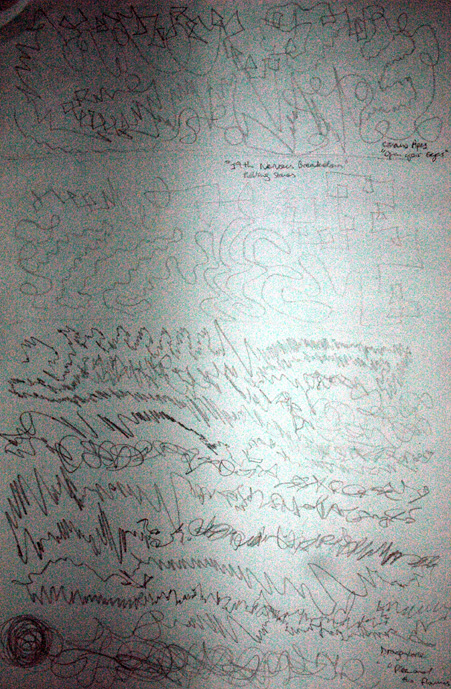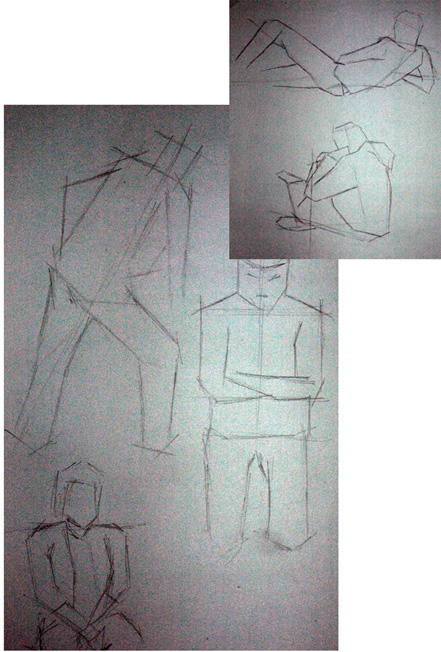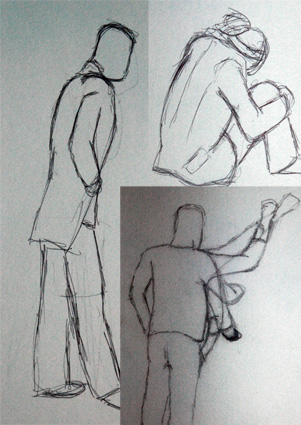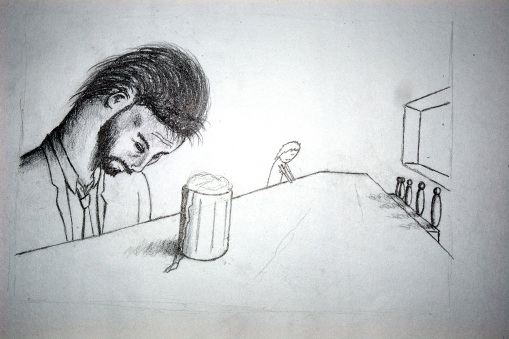After I missed a lesson with Lewis I decided to catch up on some of the work, I asked a friend who attended the class (cheers Curly Matt) and apparently drawing to music was one of the prominent exercises in that lesson. Not knowing entirely what I was supposed to be aiming for, I drew back on my previous experiences, where I did something similar at college two years ago. The photographs of the drawings have bad levels of noise due to a high ISO, but the marks and dividing lines are still visible.
The marks are my visual response to the music, entirely through mark-making, nothing particularly figurative is present. I took this approach because although specific music brings out a specific emotion, the thoughts and feelings in terms of shapes and forms that are inspired by the music are entirely different (in most cases at least). Lines and marks are more expressive than literal figures.


From top to bottom, the music in order is:
Guano Apes “Open your Eyes”
Rolling Stones “19th Nervous Breakdown”
DragonForce “Through the Fire and the Flames”
Bottom Image:
Hurt “Ten Ton Brick”
Godsmack “The Enemy”
Beethoven “Moonlight Sonata” (Opening 2 minutes only)
Slipknot “Psychosocial”
Even if this isn’t what was taught in Lewis’ lesson, It’s still good mark making practice (aggressive marks for heavy metal Slipknot and more passive, smooth flowing marks for Beethoven etc.) as well as being generally enjoyable and almost therapeutic.













